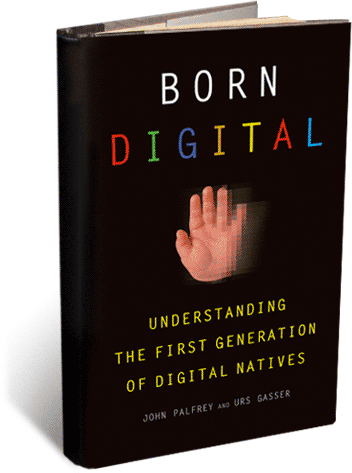The involvement of Lori Drew (an adult) in the suicide of Megan Meier has been an unavoidable topic. Last week, Drew was tried on three counts of accessing computers without authorization, a legal statute meant to stop hackers. She was acquitted of all felonies but convicted of three misdemeanors. The lawsuit itself was hugely problematic and clearly the result of prosecutors wanting to get her on anything. But in focusing on the technology, prosecutors reinforced the problematic view that technology has anything to do with this atrocity.
Let’s be clear. Megan Meier’s suicide is a tragedy. The fact that it was precipitated by bullying is horrific. And the fact that an adult was involved is downright heinous. But by centering the conversation around MySpace, people lose track of the core problems here.
Lori Drew is a quintessential “helicopter parent.” She believed that Meier was bullying her daughter. She also believed that her daughter was innocent of any wrong-doing. (While there is no way to prove or disprove that latter belief, it is uber important for parents to understand that most bullying is reciprocal. Teens bully back and the severity typically escalates over time.) Rather than teaching her daughter to take the high ground, Drew got involved. She worked with her daughter to bully back.
 Bullying is a horrific practice, but it’s also a common response when people struggle to attain status. Backstabbing, rumor-mongering, and enticement aren’t unique to teenagers. Look in any corporate office or political campaign and you’ll see some pretty nasty bullying going on. The difference is that adults have upped the ante, learned how to manipulate and hide their tracks. In other words, adults are much better equipped to do dreadful damage in their bullying that children and teens. They have practice. And it’s not a good thing.
Bullying is a horrific practice, but it’s also a common response when people struggle to attain status. Backstabbing, rumor-mongering, and enticement aren’t unique to teenagers. Look in any corporate office or political campaign and you’ll see some pretty nasty bullying going on. The difference is that adults have upped the ante, learned how to manipulate and hide their tracks. In other words, adults are much better equipped to do dreadful damage in their bullying that children and teens. They have practice. And it’s not a good thing.
Lori Drew abused her power as a knowledgeable adult by leveraging her adult knowledge of psychology to humiliate and torment a teen girl. Put another way, Lori Drew engaged in psychological and emotional child abuse. Child abuse includes the psychological or emotional mistreatment of a child. Unfortunately, most legal statutes focus on sexual and physical abuse and neglect because emotional abuse is very hard to substantiate and prosecute. But realistically, she should’ve been tried with child abuse, not a computer crime.
The fact that technology was involved is of little matter. Sure, she couldn’t have said those things to Megan’s face, but she could’ve hired a boy to do so. (How many movies have been made of boys being roped into teen girls’ humiliation schemes?) The crime she should be convicted of should have nothing to do with technology. She should be tried (and convicted) of psychologically abusing a child.
Why do we focus on the technology? Is it because it is the thing that we don’t understand? Or is it because if we were actually forced to contend with the fact that Drew was abusing a minor to protect her own that we’d have to face our own bad habits in this regard? How many of you have done something problematic to protect your child? I suspect that, at the end of the day, many parents could step in Lori Drew’s shoes and imagine themselves getting carried away in an effort to protect their daughter from perceived injustices. Is that why we’re so centered on the technology?
Let’s also make one thing very clear. This case is NOT TYPICAL. Many are clamoring to make laws based on this case and one thing we know is that bad cases make bad case law. Most of the cases focus on the technology rather than the damage of psychological abuse and the misuse of adult power. Furthermore, most focus on adult to minor abuse and the abuse of minors by strangers even those the majority of bullying is between peers who know each other. And for those who think that bullying is mostly online, think again. The majority of teens believe that bullying is far worse in-person at school than online.
This is where technology comes into play. Bullying probably has not increased because of the Internet, but it’s visibility to adults definitely has. Kids have long been bullied by peers at school without adults ever knowing. Now adults can see it. Most adults think that this means that the Internet is the culprit, but this logic is flawed and dangerous. Stifling bullying online won’t make bullying go away; it’ll just send it back underground. The visibility gives us an advantage. If we see it, we can work with it to stop it.
Approaches Parents and Society Should Take to Help Children
Parents need to be looking out for signs of bullying by their kids and by their kids’ peers. Parents should be educating kids about bullying, about the damage that it does. Most bullying starts out small. If parents catch it early on, they can help give their kids tactics to minimize the escalation. The Internet makes small acts of bullying much more visible, making it easier for parents to help provide guidance. This is a digital advantage because, for the most part, parents only learned of bullying once it had escalated to unbearable levels.
It’s important to note that bullying is best curbed in childhood when children learn that saying something mean gives them power. As a parent, you should be vigilant about never saying mean things about others in front of your child. Even about politicians whom you despise. You should also make it very clear that mean words are intolerable. Set that frame early on and reinforce. If you see mean comments online, call them out, even if they’re nothing more than “your dress is ugly.”
Unfortunately, not all parents are very involved in their kids’ lives and bullying is heavily correlated with problems at home. Bullying is also sometimes prompted by kids’ desire to get attention which creates a vicious cycle. This is why we need solutions that go beyond parents and kids.
The most important thing that we need are digital street workers. When I was in college, college students volunteered as street workers to help teens who were on the street find resources and help. They directed them to psychologists, doctors, and social workers. We need a program like this for the digital streets. We need college-aged young adults to troll the digital world looking out for teens who are in trouble and helping them seek help. We need online counselors who can work with minors to address their behavioral issues without forcing the minor to contend with parents or bureaucracy. We need online social workers that can connect with kids and help them understand their options.
The Internet brings the public into our homes. This terrifies most adults and it means that adults aren’t thinking about how to use this to their advantage. Rather than solely focusing on disturbed adults reaching out to children, let’s build systems to get trained adults to reach out to disturbed children. We need social and governmental infrastructure to build this, but it’s important. The teens who are hurting online are also hurting offline. We can silence their online cries by locking down the Internet, but it doesn’t do a damn thing to help address the core problem. We have the tools to do something about this. We just need the will and the want.
I wish we could turn back the clock and protect Megan Meier from the torment of Drew and her daughter. We can’t. And I’m not sure that any legal or technical measures would do one drop of good in preventing a similar case. (But I would be very happy to see more laws around psychological abuse of minors by adults put on the books… not to prevent but to prosecute.) What we can do is put structures in play to help children who are at-risk. Many of them are invisible. Their plight doesn’t get the broad media coverage that Megan Meier got. But there are far too many of them and their stories have none of the glitz.
They are the kids who are being beaten at home and blog about it. They are the kids who publicly humiliate other kids to get attention. They are the kids who seek sex with strangers as a form of validation. They are the kids who are lonely, suicidal, and self-destructive. They are online. They are calling out for help. Why aren’t we listening? And why are we blaming the technology instead?



